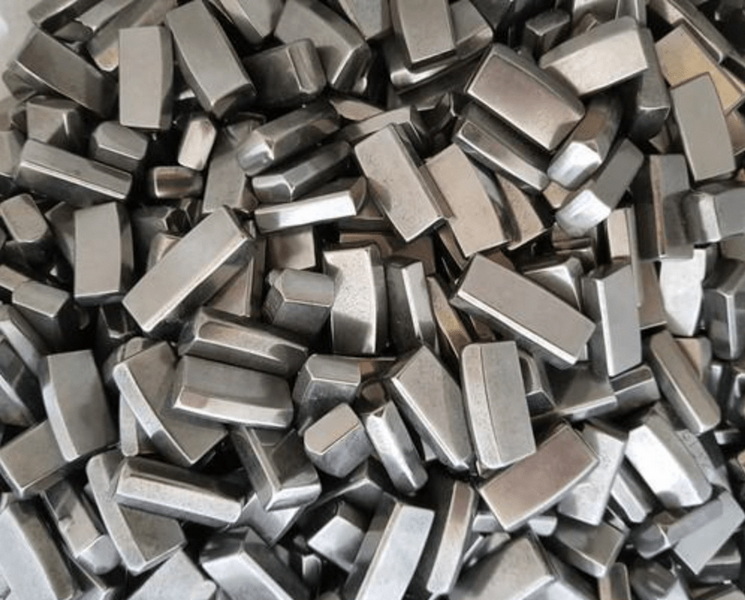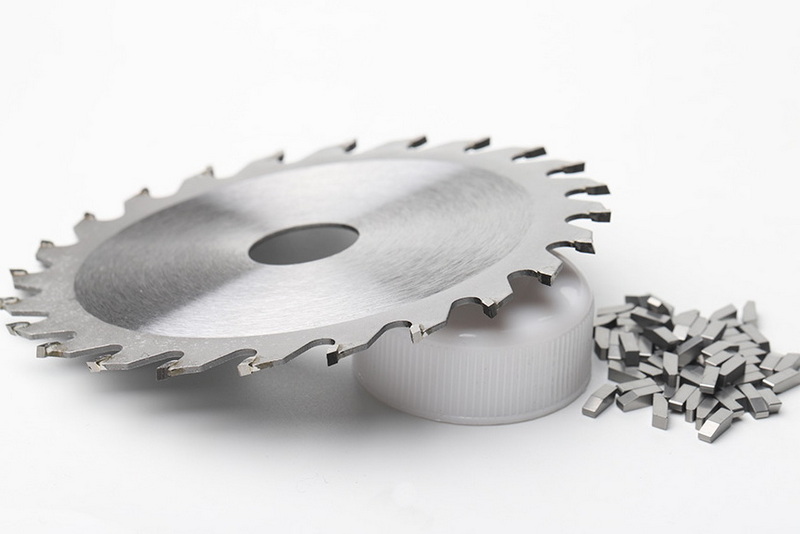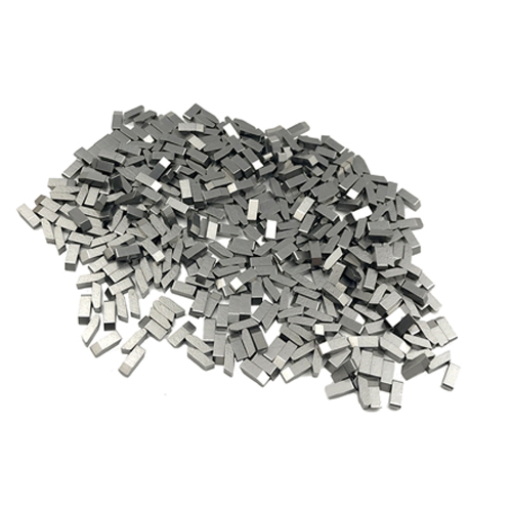Content Menu
● Introduction
● What is Tungsten Carbide?
>> Properties of Tungsten Carbide
>> Manufacturing Process
● Applications of Tungsten Carbide
>> 1. Manufacturing and Industrial Processing
>> 2. Construction
>> 3. Aerospace
>> 4. Oil and Gas Industry
>> 5. Jewelry
>> 6. Mining
>> 7. Medical Devices
● Comparison with Other Materials
>> Strength vs Hardness
● Limitations of Tungsten Carbide
● Future Trends
● Conclusion
● FAQ
>> 1. What is the main use of tungsten carbide?
>> 2. How does tungsten carbide compare to steel?
>> 3. Is tungsten carbide brittle?
>> 4. Can tungsten carbide be used in jewelry?
>> 5. What are the thermal properties of tungsten carbide?
● Citations:
Introduction
Tungsten carbide has gained significant attention in various industries due to its remarkable properties, particularly its strength and hardness. Often referred to as one of the toughest materials available, tungsten carbide is a compound made from tungsten and carbon atoms, forming a dense crystal structure that exhibits exceptional durability. This article explores the question: Is tungsten carbide the strongest metal? We will delve into its properties, applications, comparisons with other materials, and finally, address some frequently asked questions.

What is Tungsten Carbide?
Tungsten carbide (WC) is a chemical compound formed by combining tungsten and carbon in a specific ratio. Typically, it consists of approximately 94% tungsten and 6% carbon by weight. This composition results in a material that is incredibly hard and wear-resistant, making it suitable for various demanding applications.
Properties of Tungsten Carbide
1. Hardness: Tungsten carbide ranks second only to diamond on the Mohs hardness scale, achieving a hardness rating of 9. This property makes it highly resistant to scratching and wear.
2. Strength: The compressive strength of tungsten carbide is significantly higher than most metals, making it ideal for heavy-duty applications. Its Young's modulus can reach up to 550 GPa, nearly twice that of steel.
3. Thermal Stability: Tungsten carbide retains its properties at high temperatures, withstanding up to 1500°F in non-oxidizing environments. This thermal stability makes it suitable for applications where heat resistance is crucial.
4. Corrosion Resistance: It exhibits excellent resistance to corrosion and oxidation, further enhancing its durability in various environments. This property is particularly valuable in chemical processing industries where exposure to harsh chemicals is common.
5. Impact Resistance: Despite its hardness, tungsten carbide has good impact resistance, comparable to hardened tool steels. This balance between hardness and toughness allows it to endure significant stress without fracturing.
6. Density: Tungsten carbide is extremely dense, with a density of around 15 g/cm³, which contributes to its weight and stability in applications requiring mass.
Manufacturing Process
The production of tungsten carbide involves several steps:
1. Tungsten Powder Production: Tungsten is extracted from ores like wolframite and scheelite through chemical processes that yield tungsten powder.
2. Carbonization: The tungsten powder is then mixed with carbon sources and heated in a controlled environment to form tungsten carbide.
3. Sintering: The tungsten carbide powder is compacted into desired shapes and sintered at high temperatures (around 1400-1600°C) under pressure to achieve maximum density and hardness.
4. Machining: Finally, the sintered parts can be machined into specific shapes or sizes as required by various applications.
Applications of Tungsten Carbide
Tungsten carbide's unique properties make it invaluable across multiple industries:
1. Manufacturing and Industrial Processing
- Used in cutting tools, drill bits, and industrial machinery due to its wear resistance.
- Extends tool life significantly in high-speed machining operations.
- It can also be found in milling tools and inserts for lathes.
2. Construction
- Commonly found in construction tools such as saws and drill bits that require exceptional durability.
- Used for road construction equipment due to its ability to withstand abrasive materials.
3. Aerospace
- Protects critical components like turbine blades and seals from wear and erosion under extreme conditions.
- Utilized in manufacturing parts that must endure high-stress environments while maintaining structural integrity.
4. Oil and Gas Industry
- Coatings for drilling equipment enhance longevity in abrasive environments.
- Employed in downhole tools that require exceptional toughness against crushing forces.
5. Jewelry
- Used in fashion jewelry due to its scratch resistance and aesthetic appeal.
- Tungsten carbide rings have become popular for wedding bands because they are durable yet stylish.
Tungsten Carbide Jewelry
6. Mining
- Essential for manufacturing drill bits used in mining operations due to their ability to penetrate hard rock formations.
- Tungsten carbide components are also used in crushing machines for mineral processing.
7. Medical Devices
- Utilized in surgical instruments where precision and durability are paramount.
- Its biocompatibility makes it suitable for certain medical implants.

Comparison with Other Materials
When discussing whether tungsten carbide is the strongest metal, it's essential to compare it with other materials:
| Material | Hardness (Mohs) | Compressive Strength (MPa) | Applications |
| Tungsten Carbide | 9 | ~3000 | Cutting tools, jewelry |
| Steel | 4-8 | ~250-2000 | Construction, automotive |
| Diamond | 10 | ~7000 | Cutting tools |
| Titanium | 6 | ~1000 | Aerospace, medical implants |
While tungsten carbide exhibits outstanding hardness and strength, it is essential to note that diamond surpasses it in hardness but is less practical for many industrial applications due to its brittleness.
Strength vs Hardness
It's crucial to differentiate between strength and hardness when evaluating materials:
- Hardness refers to a material's resistance to deformation or scratching.
- Strength, particularly tensile strength, refers to the material's ability to withstand an applied load without failure.
Tungsten carbide excels in both categories but may not be the best choice for every application due to its brittleness compared to tougher materials like steel or titanium.
Limitations of Tungsten Carbide
Despite its many advantages, tungsten carbide does have limitations:
1. Brittleness: While hard, tungsten carbide can be brittle under certain conditions—especially if subjected to shock loads or impacts beyond its capacity.
2. Cost: The manufacturing process of tungsten carbide can be expensive compared to other materials like steel or aluminum.
3. Machinability: Although it can be machined into various shapes, the machining process requires specialized equipment due to its hardness.
4. Weight: Its high density means that products made from tungsten carbide can be heavier than those made from alternative materials, which may not be ideal for all applications.
Future Trends
As technology advances, the use of tungsten carbide continues to evolve:
1. Nanotechnology: Research into nanostructured tungsten carbide may lead to even stronger composites with enhanced properties.
2. 3D Printing: Developments in additive manufacturing techniques could allow for more efficient production methods for complex shapes made from tungsten carbide.
3. Coatings: Innovations in coating technologies may expand the use of tungsten carbide beyond traditional applications into areas such as electronics or advanced manufacturing processes.
4. Sustainability: As industries move towards more sustainable practices, recycling methods for tungsten carbide are being explored to minimize waste and reduce environmental impact.
Conclusion
In conclusion, tungsten carbide stands out as one of the strongest materials available for industrial applications due to its exceptional hardness, strength, thermal stability, and corrosion resistance. While it may not be classified as a "metal" in the traditional sense—being a compound—it undoubtedly ranks among the toughest materials utilized across various sectors. Its versatility across different industries underscores its importance as a material of choice for demanding applications where durability is paramount.

FAQ
1. What is the main use of tungsten carbide?
Tungsten carbide is primarily used in manufacturing cutting tools and industrial machinery due to its exceptional hardness and wear resistance.
2. How does tungsten carbide compare to steel?
Tungsten carbide is significantly harder than steel and has greater compressive strength, making it more suitable for high-wear applications.
3. Is tungsten carbide brittle?
While tungsten carbide is hard, it can be brittle under certain conditions; however, it generally exhibits good impact resistance compared to other hard materials.
4. Can tungsten carbide be used in jewelry?
Yes, tungsten carbide is popular in jewelry due to its scratch resistance and aesthetic appeal.
5. What are the thermal properties of tungsten carbide?
Tungsten carbide can withstand high temperatures up to about 1500°F without losing its structural integrity.
Citations:
[1] https://carbideprocessors.com/pages/carbide-parts/tungsten-carbide-properties.html
[2] https://www.tungco.com/insights/blog/5-tungsten-carbide-applications/
[3] https://www.dawen.ink/news/view/1117
[4] https://www.allied-material.co.jp/en/techinfo/tungsten_carbide/features.html
[5] https://upload.wikimedia.org/wikipedia/commons/7/72/Tungsten_carbide_inserts.jpg?sa=X&ved=2ahUKEwj0kJy08aKLAxXWQzABHc4eDAkQ_B16BAgEEAI
[6] https://jdn.ucas.ac.cn/public/uploads/files/621b288368bc8.pdf
[7] https://www.linde-amt.com/resource-library/articles/tungsten-carbide
[8] https://eurobalt.net/blog/2022/03/28/all-the-applications-of-tungsten-carbide/
















